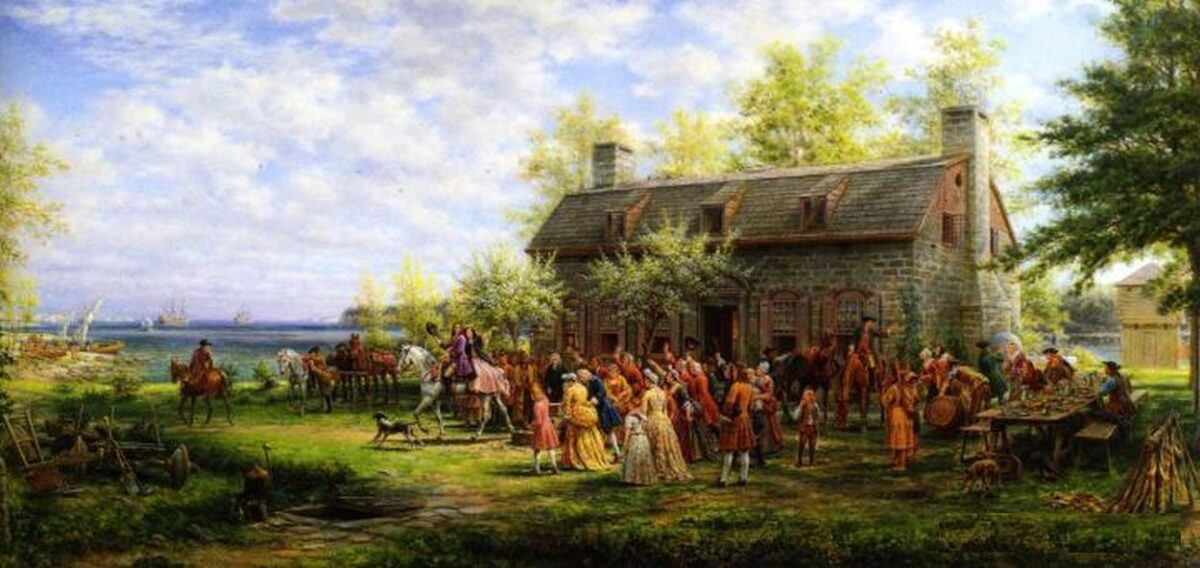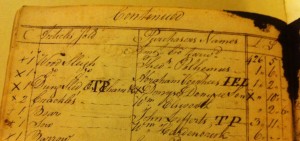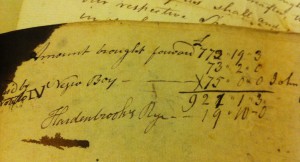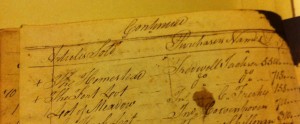THE SALE OF FORT GREENE (1798)

Brownstone Detectives investigates the history of our clients’ homes.
The story you are about to read was composed from research conducted in the course of one of those investigations.
Do you know the history of YOUR house?
********************************************************************************************************************************
In 1798, the farm that had been in the Couwenhoven family for 100 years was being foreclosed on.
John Remsen Couwenhoven had creditors to pay, and the land he had inherited about 20 years earlier from his brother, Rem, was what the judge knew would pay them back.

Thus he was ordered to place his land into the hands of a number of trustees. They would take over the responsibility of cataloging all that he owned, setting prices on all of his personal and real property, publicly listing it for sale, and then following through with the land’s conveyance.
On the set date in May, the Couwenhoven farm was swarming with activity, as men – and women – of every Dutch family, it seemed, determined what of Couwenhoen’s possessions they wanted. The squeals of hogs, the murmurs of numerous discussions, the sounds of everyday life on a farm must have been omnipresent as potential purchasers walked the farm and evaluated the many items for sale.
And when that sale began, there seemed to be a buyer for every item.
Samuel Schenck got a “Frame for a Waggon,” Simon Bergen got a “grindstone,” Barent Lefferts got a “Flax Mill,” Mr. Grant got Couwenhoven’s ladders, and a Mr. Hall got a “Grain Rake.”

All in all, there were hundreds of items hitting the auction block. And nothing was overlooked. There was everything and anything that one might have needed on an 18th century homestead.
There was a “looking glass” that Mr. Swartzkopf got for 16 shillings, “8 Pictures” that John Lefferts got for £7-4s, a “Closet” that Michael Bergen purchased for £1-12s, and a “Cupboard” that William Boerum got for £2-5s.
Then there were those items more relevant to farm and fields: a “Wood Sleigh” went to Theodorus Polhemus for £1-6s, a “Boar” to John Lefferts for £3-11s, a “Sow” to William Hardenbrook for £6, and a “Barrow” to George Powers for £9.

But there was more “livestock” than first met the eye – at least one “Negro Boy” – probably one of many slaves that Couwenhoven owned – was sold to the highest bidder for £75.
But the item that must have been most difficult for the Couwenhovens to part with was their land. Held in the family for more than 100 years it was being placed on the market now to pay off Couwenhoven’s creditors.
“The Homestead,” that part of land that would someday be a part of the Fort Greene section of Brooklyn, went to Tredwell Jackson (who had years earlier purchased the future Brooklyn Navy Yard, building the first frigate for the U.S. government, the Adams). Jackson also purchased “The Fort Lot,” which made up much of the former military grounds of Fort Greene, property that makes up much of today’s Fort Greene Park.

Jackson, though, was about to become related to the Couwenhoven’s through marriage, and it looks as though he might have been given first dibs on purchasing the land of his future wife’s family. A few months after possessing the “Homestead,” Tredwell Jackson married Dorothea Couwenhoven, and the couple settled on their new farm, keeping it, in a way, in the family just a bit longer.
Jackson had also, interestingly, purchased a number of lots of “Manure” and “Hogs Dung” in the sale, ensuring that he would have a good start on the planting season when he took title to the farm.
He was not to have that opportunity, however, for the following year he passed. Thus the Couwenhoven farm passed, too – into the hands of Tredwell’s brother, John. It was now fully and legally a Jackson possession.
Nearly 50 years later, after John Jackson had passed, this land would suffer the same fate it had for the Couwenhovens. It was placed in the hands of trustees to be sold to pay off Jackson’s creditors.
Fort Greene couldn’t get a break…..
(Our continued thanks to the folks at the Brooklyn Historical Society for their maintenance of these records and for their always cheerful assistance in providing them for our viewing.)

———————————————————————————————————————–
 Brownstone Detectives is an historic property research agency. Our mission is to document and save the histories of our clients’ homes. From our research, we produce our celebrated House History Books and House History Reports. Contact us today to begin discovering the history of your home.
Brownstone Detectives is an historic property research agency. Our mission is to document and save the histories of our clients’ homes. From our research, we produce our celebrated House History Books and House History Reports. Contact us today to begin discovering the history of your home.